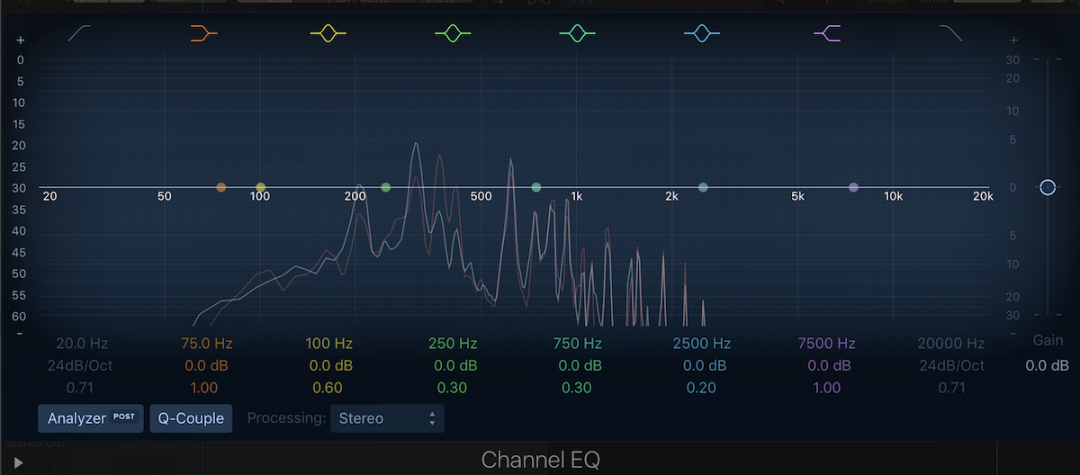Understanding equalization–probably the most widely used signal processor available to engineers–is essential to making records sound their absolute best. Sometimes it’s as simple as high-passing an instrument in the proper spot, while other cases require a bit more attention and precision. Either way, EQ is fundamental to making mix elements sound more or less defined, larger or smaller, or “better” versus “different.” Having a general reference like an EQ cheat sheet will help get you where you want to go more quickly.
In most instances, a bit of patience and trial-and-error experimentation (i.e., sweeping) will reveal an element’s most pleasant or offensive frequencies. This is a wonderful method that’s great for dissecting instruments and learning in which frequency bands they truly shine. For beginners, though, this may seem like a daunting task, and determining what sounds good and what doesn’t can be an ambiguous endeavor.
EQ cheat sheets should never be taken as law, but they do provide starting points to guide your mixes. No two instruments, performances, or recordings are alike, which is why mileage may vary from mix to mix when referencing cheat sheets or charts.
Always, always, always use your ears and trust your taste; an EQ cheat sheet will get you started, but it’s up to the engineer to make things work for that particular mix!
The following information has been adapted from Bobby Owsinski’s Mixing Engineer’s Handbook. Each instrument has a range of frequencies in which terms like “bottom,” “crispness,” etc. live; they’ll be listed as starting points when you’re trying to achieve a particular outcome with EQ.
An EQ Cheat Sheet for 14 Common Instruments
1. Bass Guitar
- 50 – 80 Hz: Bottom
- 700 Hz: Attack
- 2.5 kHz: Snap
2. Kick Drum
- 50 – 60 Hz: Bottom
- 400 Hz: Hollowness
- 3 – 5 kHz: Beater attack
3. Snare
- 120 – 240 Hz: Fatness
- 900 Hz: Point/Attack
- 5 kHz: Crispness
- 10 kHz: Snap
4. Rack Toms
- 240 – 500 Hz: Fullness/Body
- 5 – 7 kHz: Attack
5. Floor Toms
- 80 Hz: Fullness/Boom
- 5 kHz: Attack
6. Hi-Hat and Cymbals
- 200 Hz: Clang
- 6 – 10 kHz: Sparkle/Sizzle
7. Electric Guitar
- 80 Hz and below: Muddiness
- 240 – 500 Hz: Fullness
- 1.5 – 2.5 kHz: Presence
- 3 – 8 kHz: Brilliance
8. Acoustic Guitar
- 80 Hz: Fullness
- 240 Hz: Body
- 2 – 5 kHz: Presence
9. Organ
- 80 Hz: Fullness
- 240 Hz: Body
- 2 – 5 kHz: Presence
10. Piano
- 80 Hz: Fullness
- 2.5 kHz: “Hony Tonk”
- 3 – 5 kHz: Presence
11. Horns
- 120 Hz: Fullness
- 500 Hz: Honk
- 5 kHz: Piercing
12. Vocals
- 120 Hz: Fullness
- 240 Hz: Boominess
- 4 – 7 kHz: Sibilance
- 5 kHz: Presence
- 10 – 15 kHz: Air
13. Strings
- 240 Hz: Fullness
- 7 – 10 kHz: Scratchiness
14. Conga/Percussion
- 200 Hz: Ring
- 5 kHz: Slap
Further EQ Suggestions
Using the list of notable frequencies above, experiment with boosting and cutting to achieve the desired results. For example, you may want to pull some “boom” around 240 Hz out of a vocal if it’s clashing with the low end. Likewise, you may need to boost some presence around 5 kHz to make it stand out.
Remember that the EQ cheat sheet is a basic guideline–not a list of hard and fast rules. No two mixes or mix elements are alike, so sweep above and below the recommended frequencies to find what works best in your specific mix.
Also, experiment with and listen to different octaves of suggested frequencies. If a floor tom’s attack is somewhere around 5 kHz, see what’s happening at 2.5 kHz. When a kick drum’s hollowness is at approximately 400 Hz, listen to what’s occurring at 200 or 800 Hz as well.
More General Tips
- It’s advisable to use a narrow bandwidth (Q) when cutting and a broader one when boosting. Boosting with a narrow Q has the potential to make a frequency stick out in an undesirable way. On the other hand, cutting with a narrow Q means we’re pulling out a particularly offensive tone.
- Rolling off an element’s bottom end will push it forward in the mix. Rolling off the top end will push it back.
- EQ for size when dealing with fewer instruments in a mix. When mixing a 4- or 5-piece rock band, for instance, every instrument should sound quite large.
- In a dense mix with many instruments, each one should sound much smaller. This will help them all fit together in an appropriate way.
- In the same way that boosting with a narrow Q will cause one frequency to jump out of a mix, boosting a lot of a single frequency will do the same. It’s generally advised to boost a little bit of two similar frequencies than a lot of one.
- Perhaps most importantly, don’t forget the context of your mix. Making an instrument sound fantastic soloed doesn’t guarantee that it will fit with the rest of the elements. In fact, you may find that even though it sounds wonderful by itself, it sits very poorly with the rest of the instruments. Frequently un-solo elements to ensure the EQ moves you’re making suit the full mix.
For further reading on EQ, check out our article on bass guitar for a how-to on getting the most out of your mix’s low end. You may also find our conversation with Bobby Owsinski, whose work greatly influenced this article, of interest as well!
